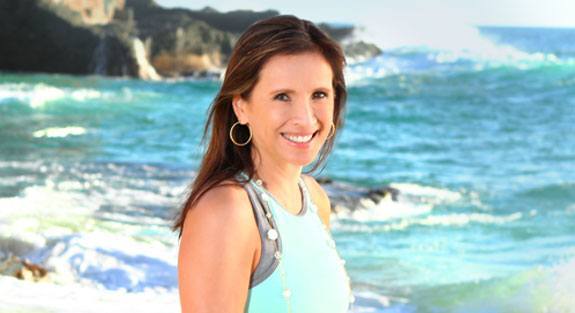Asymmetrical breasts can occur as a result of congenital variations. These variations can be quite impactful on a woman’s self-image. The advancement of surgical techniques (many of which were developed for use during breast reconstruction surgery), has expanded the surgical options available in Newport Beach to address these breast variations with cosmetic surgery. When developing your surgical plan to address congenital variations contributing to breast asymmetry, female plastic surgeon Dr. Lavinia Chong may discuss one or more of the following options:
Unilateral Breast Implant Augmentation Surgery
There are times when the patient’s primary goal is to simply match the shape and size of their preferred breast. With this type of surgery, Dr. Chong will place a saline or silicone breast implant to attain breast symmetry by adding volume to the smaller breast. Placement of the implant will be discussed during your consultation. Dependent upon your pre-op diagnosis and your aesthetic goal, the breast implant may be placed sub-fascial, dual-plane, or sub-glandular in order to achieve the optimal aesthetic result. Dr. Chong will plan your treatment with your safety, your comfort, and your aesthetic goals as top priorities.
Bilateral Breast Implant Augmentation Surgery
Hypomastia patients who are looking to increase size and improve symmetry are asked to provide a visual of their goal. We encourage breast implant patients to visit websites such as breastimplantsbymentor.com or realself.com to review photos of looks they like in relation to desired shape and size. In visiting these sites you would not be focusing so much on the specific brand or style (or even how many cc’s of implant fill). Rather your focus would be on:
- Size in relation to the proportion as seen on the patient’s frame in the photo (most photos will provide height and weight);
- Shape (taking into consideration multiple views including facing front, as well as oblique or side views), and;
- Slope…whether a more natural slope is preferred over a breast with more upper pole fullness (the upper portion of the breast, the area above the nipple).
Your visual goal helps Dr. Chong to guide your implant selection, providing you the best implant options to achieve your goal. In cases with asymmetry as a pre-op diagnosis, it is not uncommon for Dr. Chong’s implant selection to be that of two different sizes (dependent upon the variation in amount of breast tissue per breast). The measurements taken during your consultation and then reviewed again at your pre-operative appointment, along with your visual goal, will determine Dr. Chong’s suggested size selection.
Breast Surgery utilizing the Ryan Fold Procedure
Developed for use during breast reconstruction surgery, the goal of this procedure was to help post-mastectomy breast cancer patients achieve breast symmetry while also achieving natural breast ptosis. For patients experiencing the dilemma of a tight breast mound with a lack of a defined inframammary fold, James J. Ryan M.D. (Assistant Professor, Department of Plastic Surgery, Johns Hopkins University School of Medicine, Baltimore, Maryland), noted the use of a lower thoracic advancement flap allowed for the creation of a “well-defined and stable inframammary fold.”1 During this procedure, Dr. Chong surgically re-creates a natural breast fold by employing the Lower Thoracic Advancement Technique (Ryan Fold Procedure).
Unilateral Breast Reduction Surgery
In some cases, asymmetry may result with the patient viewing one breast as being the perfect size and the other as being too small. In other cases, the preferred breast size may be the smaller of the two breasts. A unilateral breast reduction, reduces the size of only the larger breast in order to achieve symmetry. This may be a standalone procedure, or may also include augmentation with an implant for the remaining breast, or fat grafting and/or a lift in order to achieve your desired goal.
Fat Grafting to the Breast(s)
Another procedure which may be employed to address hypomastia is fat grafting. This is a procedure Dr. Chong has been performing for quite some time now. In the past Dr. Chong has provided fat transfer as an option for her breast implant explantation patients (patients who had removed their breast implants and had a lift, but were also looking to replace a small amount of volume). Fat grafting has also been of benefit to many of our Mommy Makeover patients who have have transferred fat grafted during their Lipoabdominoplasty (Tummy Tuck) to their breasts as a means of replenishing lost volume following breastfeeding, rejuvenating a deflated breast. And Dr. Chong has performed fat grafting procedures for her Orange County patients looking to replenish volume loss due to aging in their hands, décolletage, and face (either during a facelift, or as a standalone facial rejuvenation procedure).
This procedure takes fat from another area of the body and replaces deficient breast volume. The ideal fat harvest comes from the belly (an area many women are happy to take fat away from). Fat may be added to one or both breasts, depending on your aesthetic goal.
Unilateral Breast Lift
A breast lift is a procedure often done in association with breast implant surgery in cases where a patient has a sagging or deflated-looking breast. But it is also often done as a standalone procedure to reposition the breast, giving it a bit more perk. Some women have a hyperplasia tubular breast, and while an saline/silicone breast implant or fat grafting can replace volume loss, there are times when a Traditional Mastopexy or Periareolar Mastopexy may be of assistance in achieving the desired symmetry.
Soft Tissue Support: Durasorb
At times there exists limits to a patient’s soft tissue support. It is not uncommon to see this occur with age (hormonal changes, weight loss/gain). Newport Beach plastic surgeon Dr. Lavinia Chong has been assisting her breast reduction, breast lift, and revisional breast implant patients for years by incorporating an “internal bra” to serve as extra support for this compromised tissue. A similar technique has proven to be beneficial to hypomastia patients who are seeking a primary breast surgery, where there exists an insufficient amount of soft tissue support.
In the case of the absent inframammary crease/fold, an application of DuraSorb® Monofilament Mesh, can provide the soft tissue support needed in order to create a sufficient, natural-looking inframammary fold. During application mesh is sutured to the pectoralis major. Dependent of your proposed surgical plan, Dr. Chong may be discuss as an option for much-needed support during your recovery process, strengthening regenerated tissue over time.
Virtual appointments are available for those patients in neighboring San Diego and Los Angeles counties. If you live in or plan to be in the Orange County area and would prefer to be seen in-office at our private surgical suite, please advise your Patient Care Coordinator when requesting your private consultation. Schedule time to discuss your surgical breast options with Board-Certified Dr. Lavinia Chong by calling our office in Newport Beach at (949) 644-1400 or click on the button below to request a consultation.


